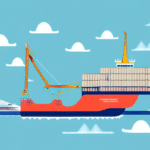Measuring the Cost to Serve Per Order and Why It Matters for E-Commerce Operations
For e-commerce businesses, understanding the cost to serve per order is critical to remaining competitive and profitable in a crowded marketplace. Cost to serve represents the total cost of fulfilling an order, from the time it is placed to the point of delivery, including overhead and administrative expenses. In this article, we will explore why cost to serve matters for e-commerce operations and strategies for reducing it to improve the bottom line.
Understanding Cost to Serve in E-Commerce
What is Cost to Serve?
Cost to serve is a comprehensive metric that encompasses all expenses associated with fulfilling a customer order. This includes direct costs like shipping and packaging, as well as indirect costs such as labor, overhead, and administrative expenses. By calculating the cost to serve per order, businesses can gain a clearer picture of their profitability and identify areas for improvement.
Significance for E-Commerce Operations
Understanding the cost to serve is crucial for e-commerce businesses as it provides insights into where resources are being allocated and where inefficiencies may lie. According to a McKinsey report, optimizing operational costs can lead to significant improvements in profitability and customer satisfaction.
Breaking Down the Cost to Serve Calculation
Calculating the cost to serve involves aggregating all relevant expenses related to order fulfillment. This includes:
- Shipping Costs: Fees paid to carriers for delivering products.
- Packaging Materials: Costs of boxes, tape, padding, and other materials used to protect products during transit.
- Labor: Wages and benefits for employees involved in picking, packing, and shipping orders.
- Overhead: Indirect costs such as warehouse utilities, rent, and equipment.
- Administrative Expenses: Costs related to order processing, customer service, and returns management.
By analyzing these components, businesses can pinpoint specific areas where costs can be reduced without compromising service quality.
The Impact of Cost to Serve on E-Commerce Operations
Why E-Commerce Operations Should Care
Reducing the cost to serve per order can significantly enhance an e-commerce business's profitability. Lower operational costs allow businesses to reinvest in growth initiatives, offer competitive pricing, and improve overall customer experience. According to a Harvard Business Review article, companies that effectively manage their operational costs are better positioned to adapt to market changes and consumer demands.
Connection to Customer Satisfaction
There is a direct correlation between cost to serve and customer satisfaction. Efficient operations lead to faster order fulfillment, fewer errors, and a more seamless shopping experience. Customers are more likely to return to businesses that consistently deliver reliable and timely service. Additionally, cost savings from optimized operations can be passed on to customers in the form of lower prices or enhanced services, further boosting satisfaction and loyalty.
Hidden Costs in Order Fulfillment
Shipping Costs
Shipping is one of the most significant components of cost to serve. Factors such as package weight, dimensions, destination, and delivery speed all influence shipping expenses. Offering free and fast shipping can attract customers but often comes at a higher cost. According to the Forbes Technology Council, businesses can mitigate shipping costs by negotiating bulk rates with carriers, optimizing packaging sizes, and leveraging regional distribution centers.
Returns and Exchanges
Handling returns and exchanges is another area where costs can quickly add up. The Reverse Logistics Association estimates that return rates for e-commerce can range from 20% to 30%, depending on the industry. Costs include shipping, restocking, and processing refunds or exchanges. Implementing a robust returns management system can help streamline this process and reduce associated costs.
Packaging Materials
High-quality packaging is essential to protect products during transit, but it can also be a significant expense. Investing in sustainable packaging solutions can not only reduce costs in the long run but also appeal to environmentally conscious consumers. According to Packaging Digest, businesses are increasingly adopting recyclable and reusable packaging materials to minimize environmental impact and reduce costs.
Fraud Prevention
Online fraud is a growing concern for e-commerce businesses, leading to increased costs in fraud detection and prevention measures. Implementing advanced fraud detection software and stringent security protocols can help protect both the business and its customers. While these measures require investment, they are essential for maintaining trust and reducing the financial impact of fraudulent activities.
Strategies to Reduce Cost to Serve
Implementing Automation
Automation technologies can significantly reduce labor costs and improve operational efficiency. Automated systems for order processing, inventory management, and shipping can minimize errors and speed up fulfillment. According to TechRadar, businesses that leverage automation report up to a 30% increase in operational efficiency.
Supply Chain Optimization
Optimizing the supply chain involves improving relationships with suppliers, reducing lead times, and enhancing inventory management. Efficient supply chain management ensures that products are available when needed, reducing holding costs and minimizing stockouts. Implementing just-in-time inventory practices can also help lower inventory-related expenses.
Leveraging Technology and Data Analytics
Advanced data analytics can provide valuable insights into customer behavior, order patterns, and operational performance. By analyzing this data, businesses can make informed decisions to optimize pricing, inventory levels, and marketing strategies. Technologies like artificial intelligence (AI) and machine learning can further enhance predictive capabilities, allowing for proactive management of operational challenges.
Case Studies: Successful Optimization of Cost to Serve
Amazon
Amazon is a prime example of a company that has effectively optimized its cost to serve through extensive use of technology and automation. The company employs advanced robotics in its fulfillment centers, employs data-driven inventory management, and utilizes real-time analytics to streamline operations. These strategies have enabled Amazon to offer competitive pricing and fast shipping, contributing to its dominant market position.
Zappos
Zappos, the online shoe retailer, has focused on creating a culture of exceptional customer service while maintaining cost efficiency. By integrating returns and exchanges seamlessly into its business model and investing in customer service training, Zappos has managed to maintain high levels of customer satisfaction without exorbitant operational costs. This balance has been key to its sustained profitability and customer loyalty.
Measuring ROI of Cost Reduction Initiatives
Investing in cost reduction initiatives requires careful analysis to ensure a positive return on investment (ROI). E-commerce businesses should evaluate the financial impact of each initiative by comparing the costs saved against the investments made. Metrics such as increased profit margins, higher order volumes, and improved customer retention rates can help determine the effectiveness of these strategies. Additionally, considering the long-term benefits, such as enhanced scalability and market competitiveness, is essential for a comprehensive ROI assessment.
Future Trends in Cost to Serve Management
The landscape of e-commerce is continually evolving, and businesses must stay ahead by adopting emerging technologies and adapting to new consumer behaviors. Future trends in cost to serve management include:
- Artificial Intelligence and Machine Learning: These technologies will play a pivotal role in predictive analytics, inventory management, and personalized customer experiences.
- Internet of Things (IoT): IoT devices can provide real-time tracking and monitoring of inventory and shipments, enhancing operational transparency and efficiency.
- Sustainable Practices: Increasing emphasis on sustainability will drive the adoption of eco-friendly packaging and energy-efficient operations.
- Same-Day and Alternative Delivery Channels: Meeting the demand for faster delivery options will require innovative logistics solutions and strategic partnerships.
Staying abreast of these trends will enable e-commerce businesses to continue optimizing their cost to serve and maintain a competitive edge in the market.
Conclusion
Measuring the cost to serve per order is essential for e-commerce businesses striving to remain competitive and profitable. A thorough understanding of fulfillment costs allows businesses to identify inefficiencies, optimize operations, and make informed strategic decisions. By implementing strategies such as automation, supply chain optimization, and leveraging data analytics, e-commerce businesses can effectively reduce their cost to serve, enhance customer satisfaction, and drive sustainable growth.






















